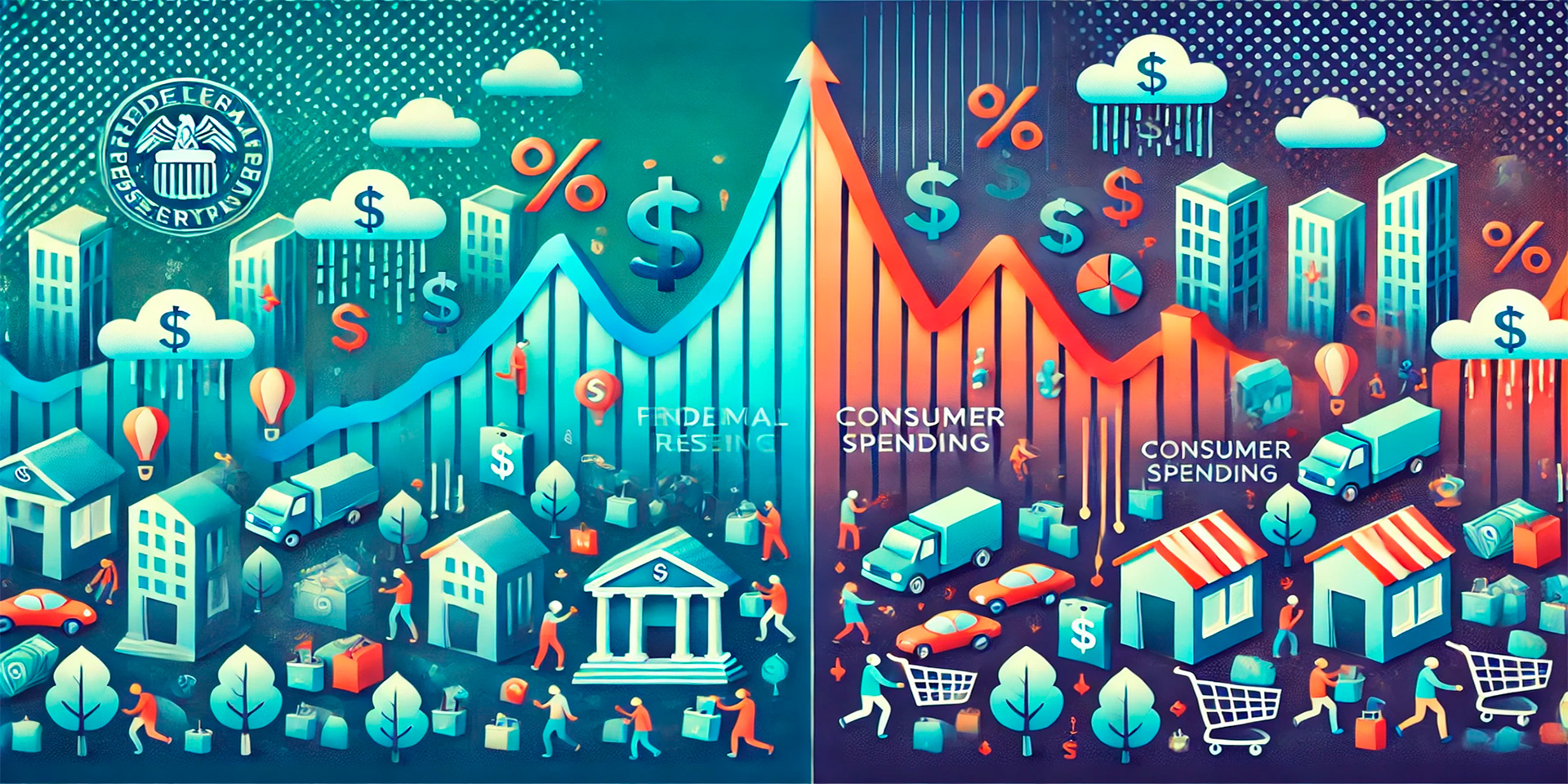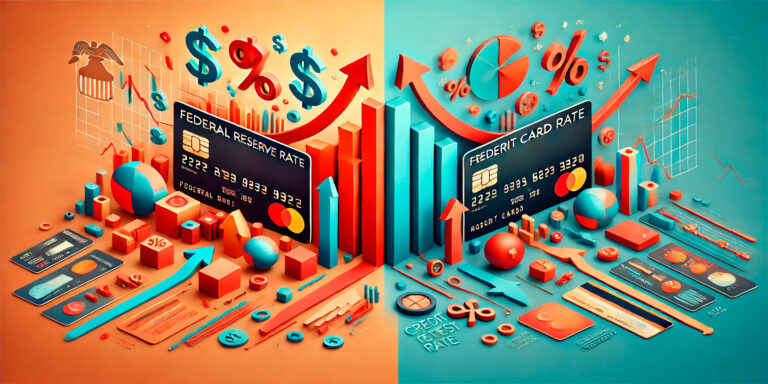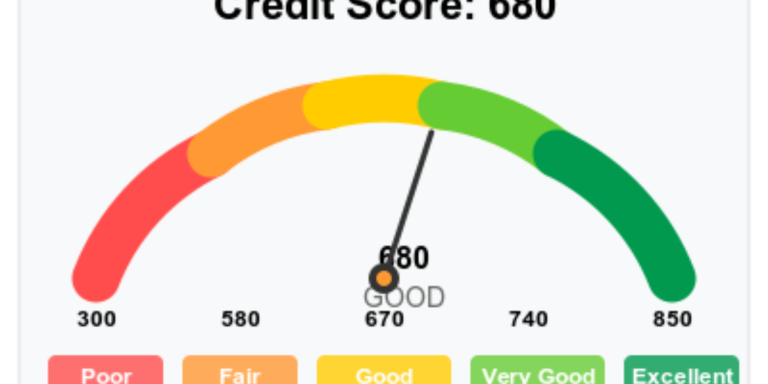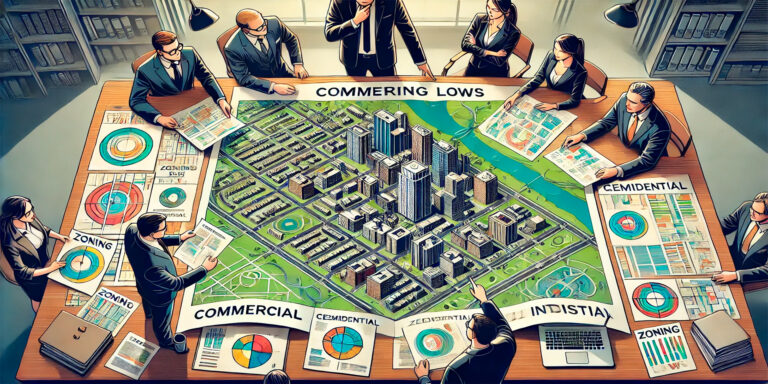The Federal Reserve (Fed) plays a crucial role in managing the U.S. economy, particularly through its interest rate policies. By adjusting the federal funds rate—the rate at which banks lend to each other—the Fed aims to influence inflation and consumer spending. Low interest rates generally encourage spending, while high rates are used to cool inflation. In this article, we’ll explore how the Fed’s rate decisions impact both inflation and consumer behavior, driving key changes in the economy.
The Relationship Between Interest Rates and Inflation
Inflation refers to the general rise in prices across an economy over time. When inflation is too high, the purchasing power of money diminishes, causing consumers to pay more for goods and services. To control inflation, the Federal Reserve raises interest rates, making borrowing more expensive. This discourages spending and investment, slowing down economic activity and helping to curb rising prices. Conversely, when inflation is low, the Fed lowers rates to stimulate spending and investment, injecting more liquidity into the economy.
Monetary Tightening to Curb Inflation
When inflation rises above the Fed’s target—typically around 2% annually—the central bank uses monetary tightening. This involves raising the federal funds rate, which makes it more expensive for businesses and consumers to borrow money. As borrowing costs rise, consumers and businesses scale back spending, leading to reduced demand for goods and services. With lower demand, price increases begin to slow, helping to bring inflation under control.
The Danger of Deflation
The Fed must also be cautious of deflation, a scenario where prices fall across the economy. While deflation may seem beneficial, it can be harmful to the economy as consumers delay purchases in anticipation of even lower prices, which leads to reduced spending and a potential economic slowdown. To combat deflation, the Fed may lower interest rates, encouraging more spending and investment to stimulate demand.
How Fed Rate Hikes Affect Consumer Spending
Fed rate hikes make borrowing more expensive for consumers, directly impacting their spending habits. Higher interest rates mean that credit cards, car loans, mortgages, and personal loans become costlier. As a result, consumers are less likely to take out loans or make large purchases, leading to a decrease in overall consumer spending. When consumers spend less, businesses experience lower sales, which can result in reduced production and slower economic growth.
Impact on Consumer Credit
Credit cards are one of the first areas where consumers feel the effects of a Fed rate hike. Since most credit cards have variable interest rates tied to the federal funds rate, any increase in the Fed’s rate means higher interest charges for cardholders. This makes carrying a balance more expensive, prompting consumers to pay down debt or reduce spending. Higher credit card interest rates can significantly impact households with tight budgets, leading to a pullback in discretionary spending.
Auto Loans and Home Purchases
The cost of financing large purchases like cars and homes is also affected by Fed rate hikes. As rates rise, auto loan and mortgage payments become more expensive. For example, a 1% increase in mortgage rates can add hundreds of dollars to monthly payments, discouraging potential homebuyers. This drop in demand can lead to a slowdown in the housing market and affect related industries like construction and real estate.

Low Fed Rates and Consumer Spending
When the Fed lowers interest rates, borrowing becomes cheaper, encouraging more consumer spending. Low rates reduce the cost of loans and mortgages, making it easier for consumers to finance big-ticket items like homes, cars, and renovations. Lower rates also incentivize businesses to invest in expansion, creating more jobs and further boosting consumer spending.
Increased Access to Credit
With lower rates, banks and lenders are more willing to extend credit to consumers. Lower interest rates make it easier for households to access affordable loans and credit, which in turn encourages more spending on goods and services. For example, during periods of low interest rates, homeowners may be more likely to take out home equity loans for renovations or other large expenses, adding to overall economic activity.
Boost to Consumer Confidence
Lower interest rates also tend to boost consumer confidence. When borrowing is affordable, consumers are more likely to make large purchases and feel secure in their financial future. This sense of confidence further stimulates spending across the economy, helping to drive growth. However, if rates remain too low for too long, it can lead to overheating, where excessive borrowing and spending contribute to rising inflation.
The Fed’s Dual Mandate: Inflation Control and Economic Growth
The Federal Reserve operates under a dual mandate: to promote maximum employment and maintain stable prices. This means the Fed must carefully balance its efforts to control inflation with the need to support economic growth. Raising rates too quickly could stifle growth, while keeping them too low for too long may lead to runaway inflation. The Fed uses various economic indicators, including inflation rates, unemployment data, and consumer spending patterns, to inform its decisions on interest rates.
Employment and Inflation Trade-Off
One of the main challenges the Fed faces is managing the trade-off between low inflation and high employment. When the economy is growing rapidly and unemployment is low, inflation tends to rise as consumer demand increases. To prevent the economy from overheating, the Fed raises rates to cool demand and control inflation. However, these rate hikes can slow job growth as businesses cut back on expansion due to higher borrowing costs. The Fed must carefully navigate these opposing forces to achieve its dual mandate.
Long-Term Rate Strategy
The Fed also considers long-term economic trends when setting interest rates. For instance, if inflation is projected to rise due to supply chain disruptions or increased consumer demand, the Fed may begin raising rates preemptively to prevent inflation from getting out of control. Conversely, if the economy is facing a downturn, the Fed may lower rates to stimulate growth, even if inflation is temporarily above target.
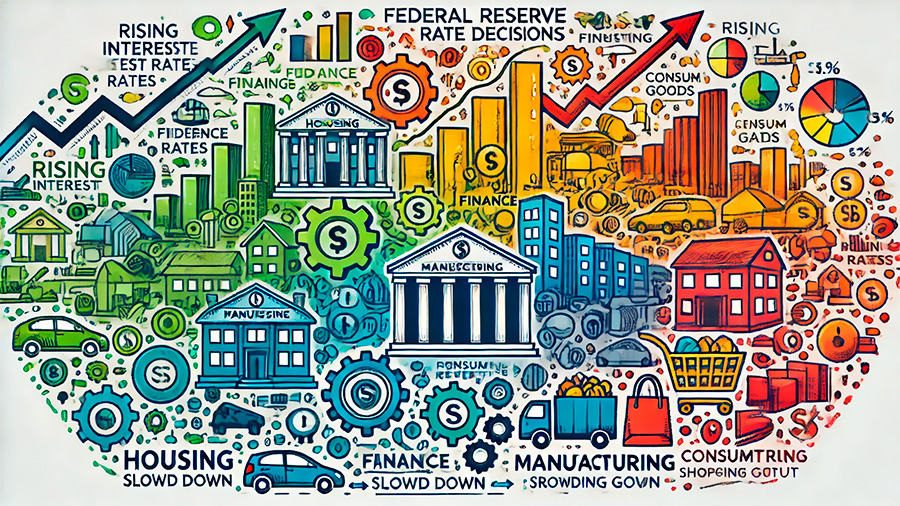
How Fed Rate Decisions Affect Different Economic Sectors
The impact of Fed rate decisions extends beyond consumer spending, influencing various sectors of the economy. Industries that rely heavily on borrowing, such as real estate, manufacturing, and retail, are particularly sensitive to changes in interest rates. For example, when the Fed raises rates, real estate transactions may slow as potential homebuyers are priced out of the market by higher mortgage costs. On the other hand, lower rates can spur construction and housing development by reducing the cost of financing projects.
Impact on the Housing Market
The housing market is one of the most rate-sensitive sectors in the economy. Higher interest rates reduce affordability for potential homebuyers, leading to fewer transactions and a slowdown in home price appreciation. Conversely, lower rates make it easier for buyers to finance their purchases, boosting demand and driving up home prices. The Fed’s rate decisions can thus have a significant impact on the overall health of the housing market.
Effect on Consumer Goods and Retail
Retailers and manufacturers that depend on consumer spending are also affected by changes in interest rates. When rates rise and borrowing becomes more expensive, consumers cut back on discretionary spending, reducing demand for non-essential goods like electronics, clothing, and furniture. On the flip side, lower rates encourage spending on these items, leading to increased sales for retailers.
Fed Rate Cuts and Inflation Risk
While rate cuts are often used to stimulate economic activity, they carry the risk of higher inflation. When rates are lowered, consumer spending increases, leading to greater demand for goods and services. If supply cannot keep up with demand, prices will rise, contributing to inflation. The Fed must be cautious in managing rate cuts to avoid fueling excessive inflation, which can erode purchasing power and destabilize the economy.
Preventing Overheating
To prevent the economy from overheating during periods of low interest rates, the Fed monitors inflation closely. If inflation starts to rise too quickly, the Fed may begin raising rates again to slow down demand and stabilize prices. This delicate balance requires constant attention to economic data and a willingness to adjust policy as needed.
Managing Inflation Expectations
Inflation expectations also play a critical role in the Fed’s rate decisions. If consumers and businesses expect inflation to rise, they may increase spending now to avoid higher prices later, further fueling inflation. The Fed uses its interest rate policy to manage these expectations, signaling its commitment to keeping inflation under control.
By carefully adjusting interest rates, the Federal Reserve influences both inflation and consumer spending, guiding the economy toward sustainable growth while preventing excessive inflation. Understanding these mechanisms helps consumers and businesses anticipate how Fed decisions may impact their financial futures.

